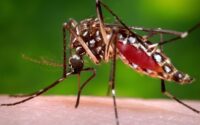Americans are drinking as much alcohol now as in Civil War days
They’re soldiering on.
Americans are drinking alcohol at levels reminiscent of the Civil War era, a new report from the National Institute on Alcohol Abuse and Alcoholism has found.
Over the course of 2021, the average American consumed 2.51 gallons of ethanol — the alcohol found in wine, beer and spirits — compared with 2.53 gallons in 1860, the brink of the Civil War.
“During stressful times, people tend to drink more,” Hilary Sheinbaum, author of “The Dry Challenge,” told The Post on Wednesday. “People want to turn to a vice to relax them.”
The NIAAA defines a “standard drink” as 0.6 fluid ounces of ethanol, meaning that Americans 14 and older are consuming about 535.5 standard drinks on average in a year.

Alcohol consumption reached a national high in 1980, with Americans drinking an average of 2.8 gallons.
2021 saw the largest two-year increase since 1969 — 5.5% — and marked a 60% increase in liquor consumption compared to the mid-1990s.
Regionally, alcohol consumption increased by 5.4% in the Northeast, 3.4% in the South, 2.3% in the West and 1.6% in the Midwest between 2020 and 2021.
Sheinbaum explained to The Post that “these days, alcohol is so prevalent in everything we do and more accessible than ever.”
“It’s readily available in a handheld cocktail form or sold at the gas station,” she noted.
Canned alcoholic beverages, for example, have become more popular, with ready-to-drink cocktails (commonly called RTDs) seeing a 127% growth in sales over the past two years, according to the alcohol home-delivery service Drizly.

COVID-19 also affected drinking habits, with a 2021 study by the American Psychological Association finding that nearly a quarter of adults were drinking more to manage stress during the pandemic.
In 2020, sales of alcohol increased by 2.9%, the largest annual increase in more than 50 years, the NIAAA reported. Liquor stores were deemed “essential businesses” in many states.
Moms with kids under the age of 5 increased their booze consumption by nearly 325% between the start of the pandemic and the end of 2020, according to a startling study by RTI International, a nonprofit research institute.
The Centers for Disease Control and Prevention says women should drink no more than one standard alcoholic beverage a day and men no more than two.
While some studies claim to support the potential health benefits of light to moderate alcohol consumption, several others have found that any amount of alcohol could increase the risk of developing health complications.
One study found that women who enjoy two or more drinks a day are at an increased risk of early death compared to those who abstain entirely from alcohol.
Men, on the other hand, see their risk for death begin to increase when downing three or more alcoholic beverages.
Excessive alcohol use was responsible for more than 140,000 deaths in the US each year between 2015 and 2019, the equivalent of more than 380 deaths per day, according to the CDC.
As many Americans struggle to manage their drinking, an increasing number of millennials and Gen Zers are exploring sobriety with their health in mind.
The post-pandemic “zero proof” movement, an explosion of mocktail offerings, and the launch of nonalcoholic bottle shops and dry bars have put a chic spin on teetotaling.
Still, experts are concerned about Americans’ alcohol habits.
But “any kind of lifestyle change will take time,” Sheinbaum stressed.


